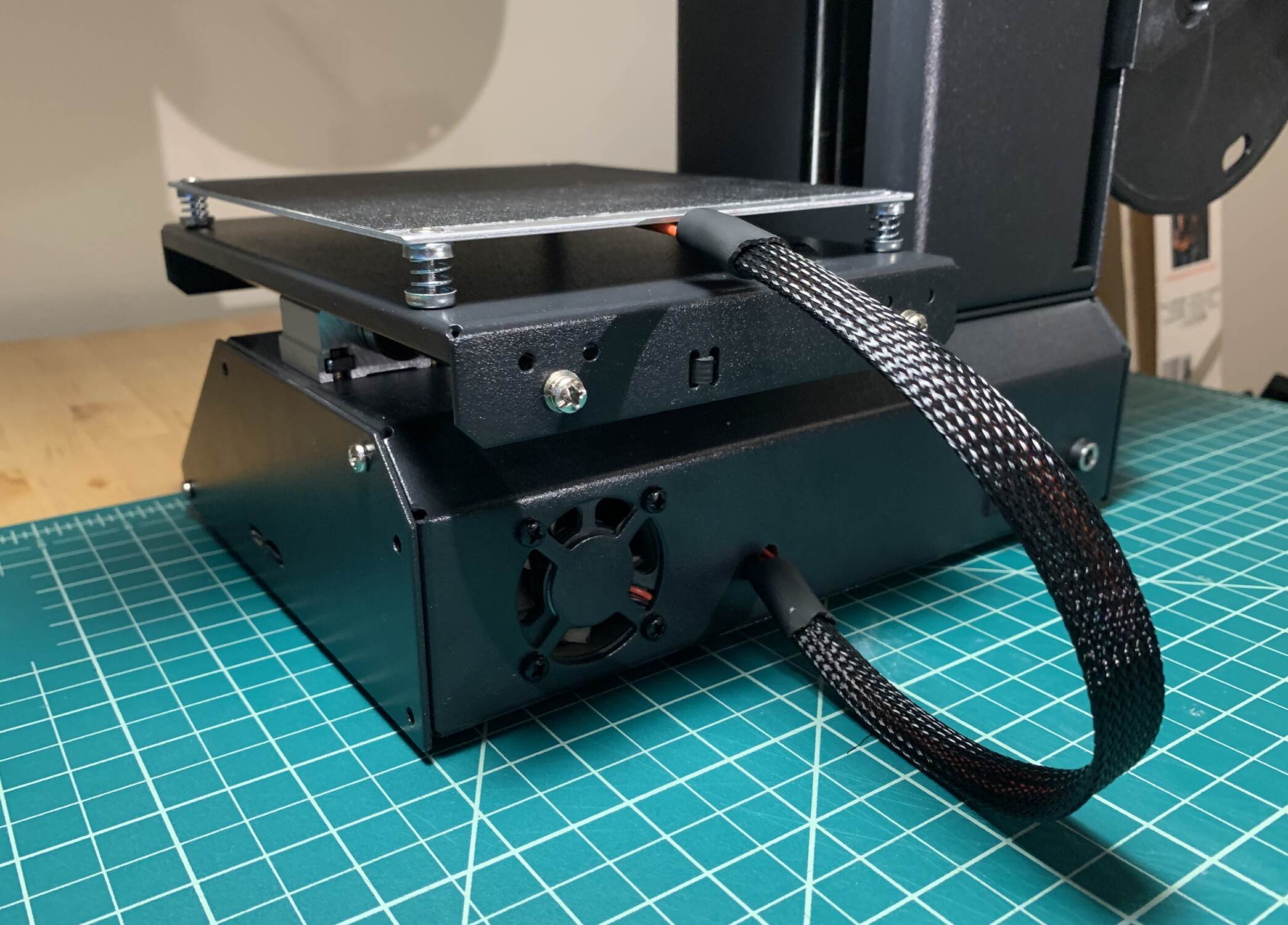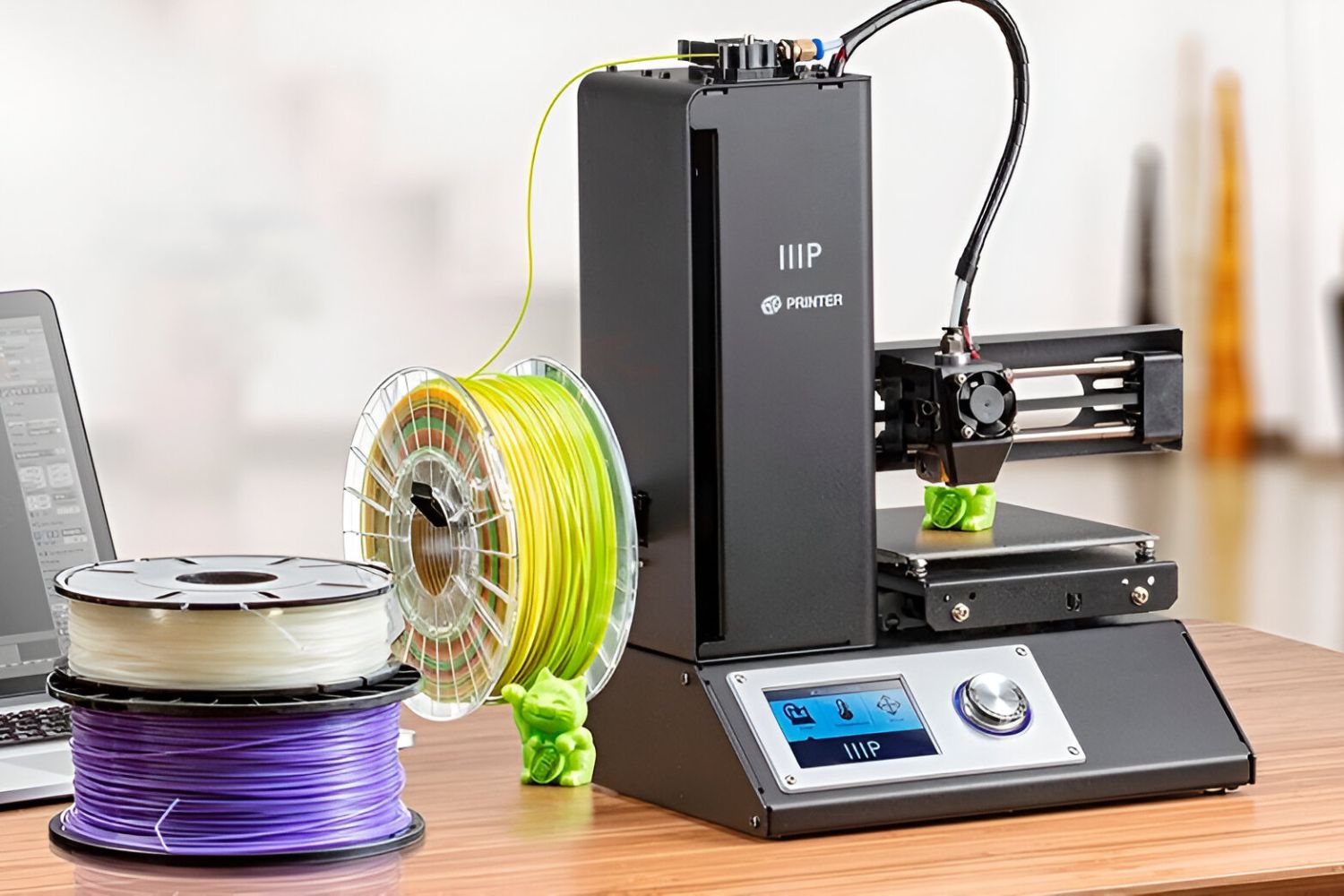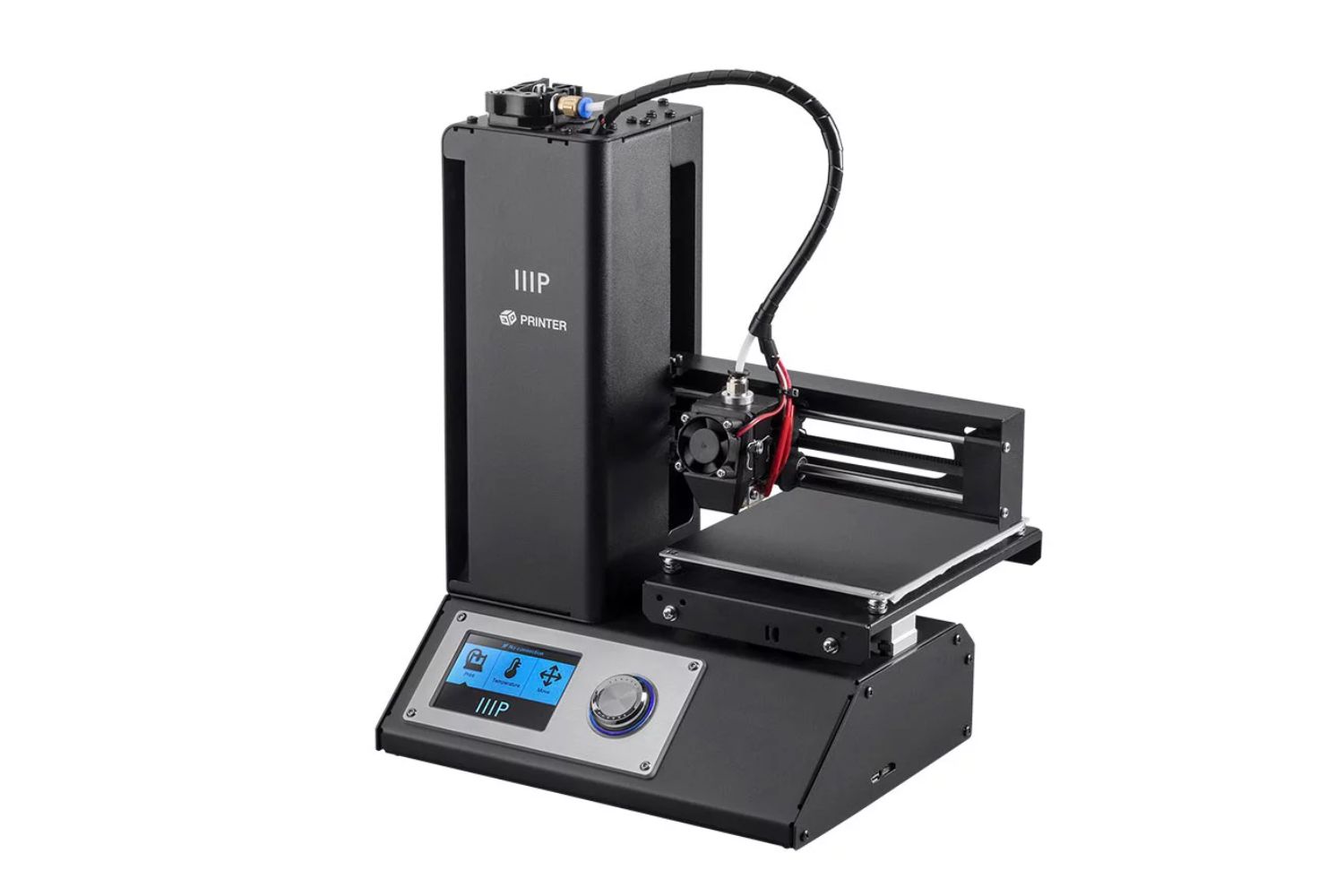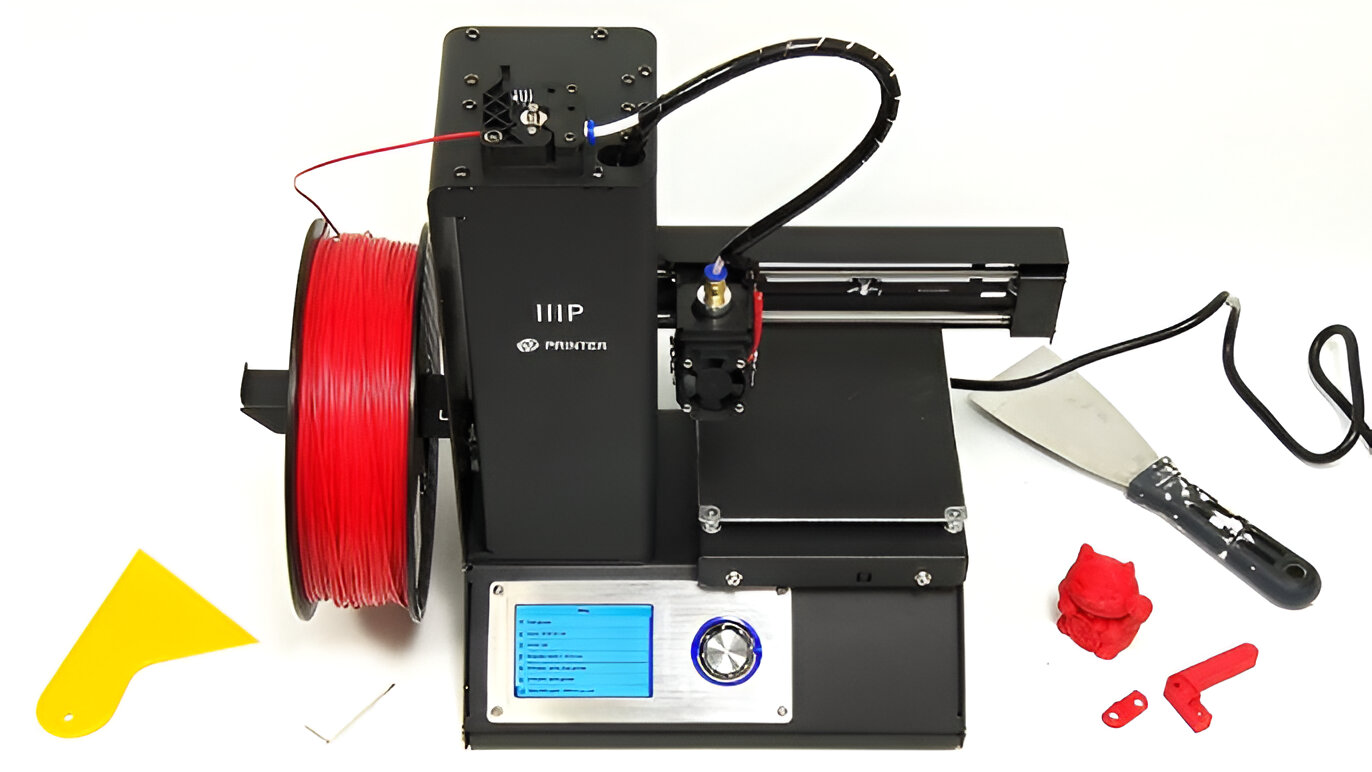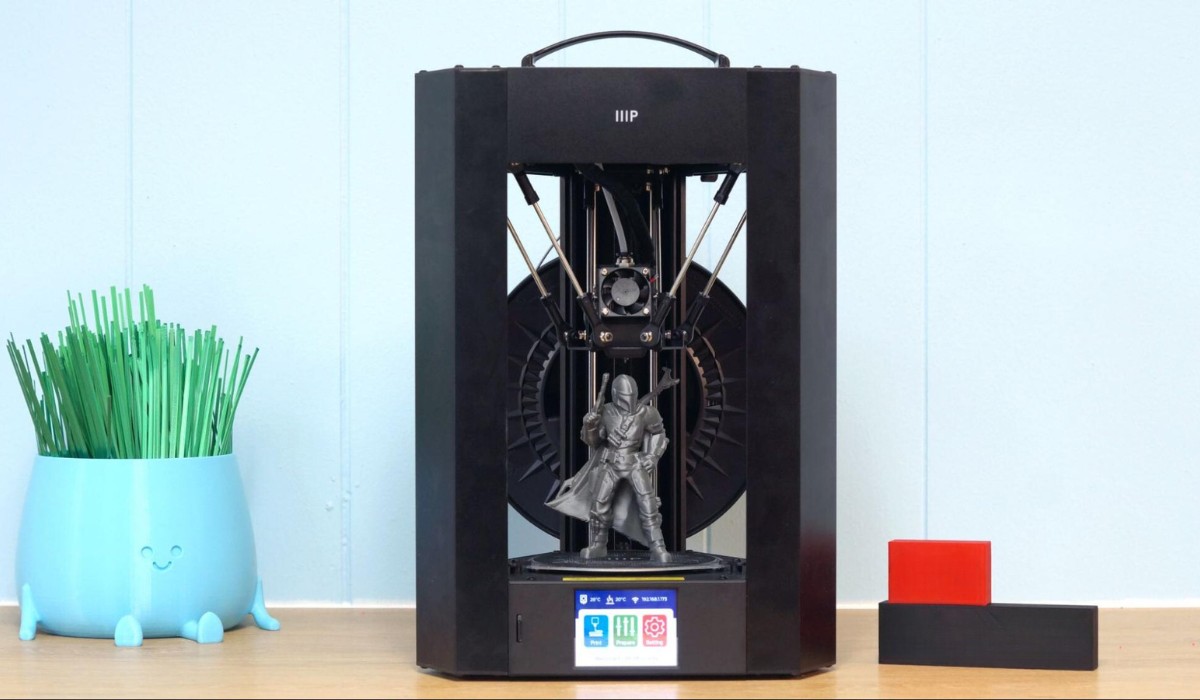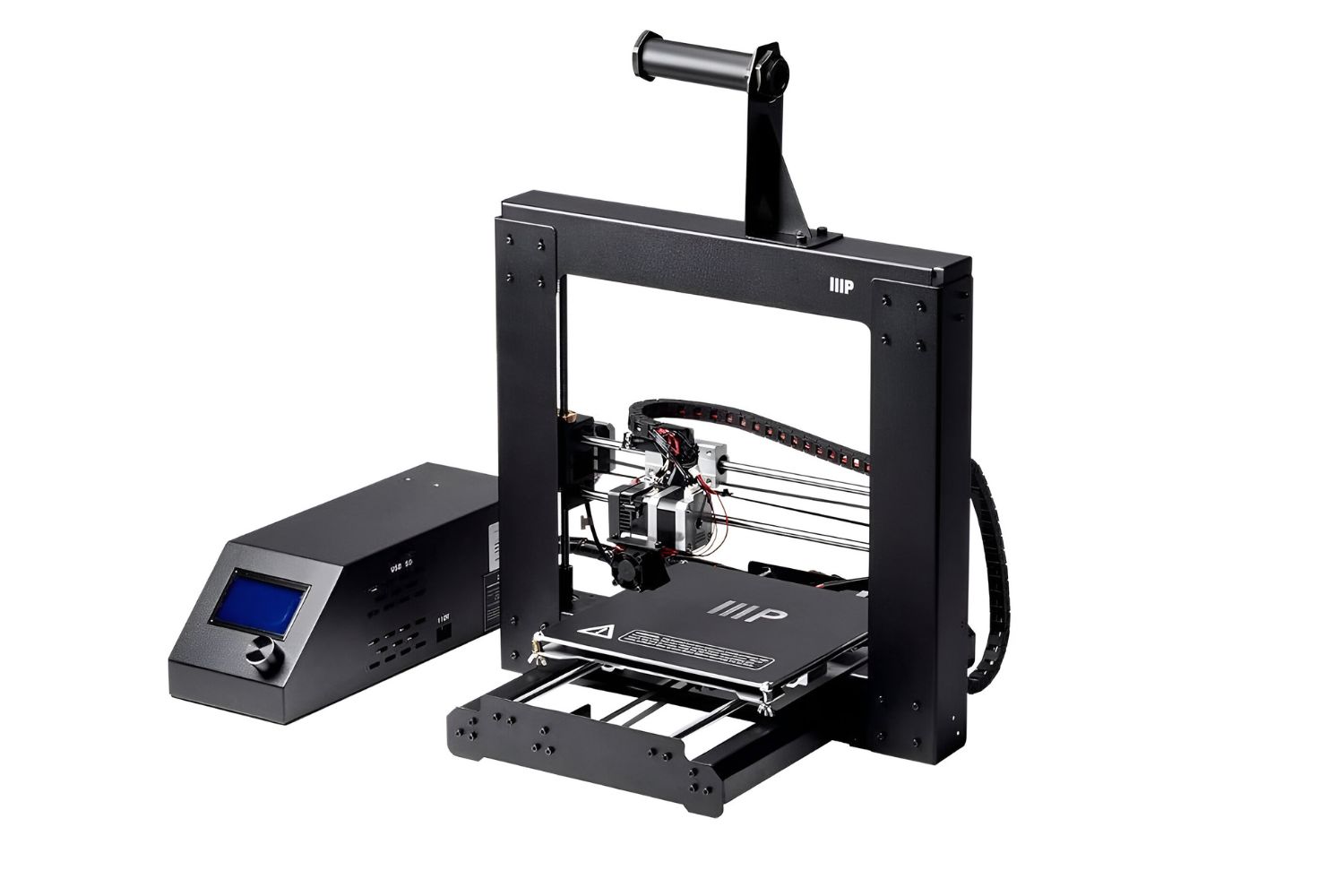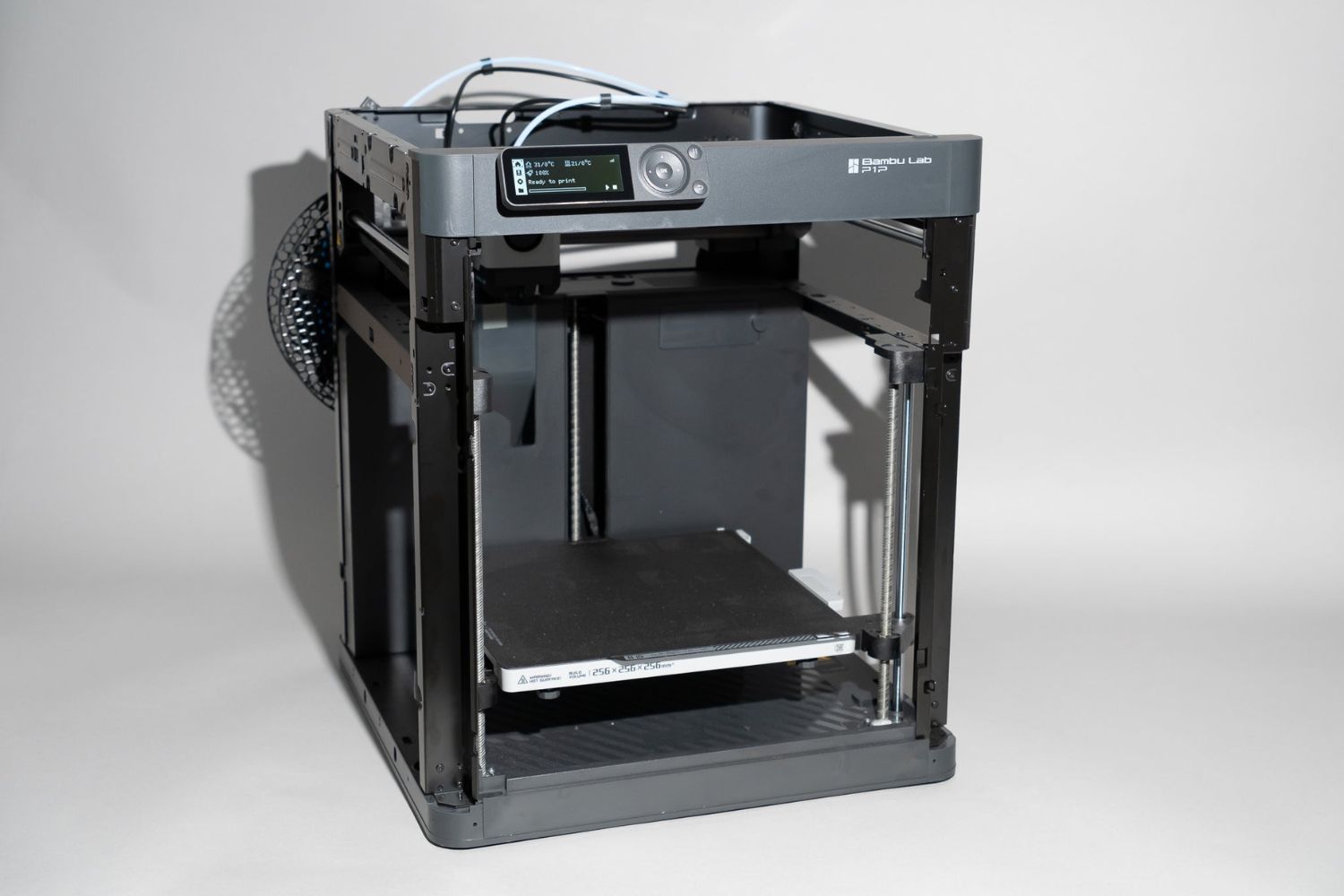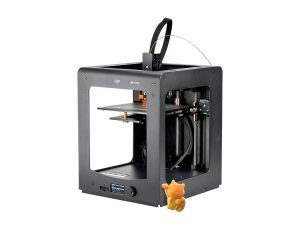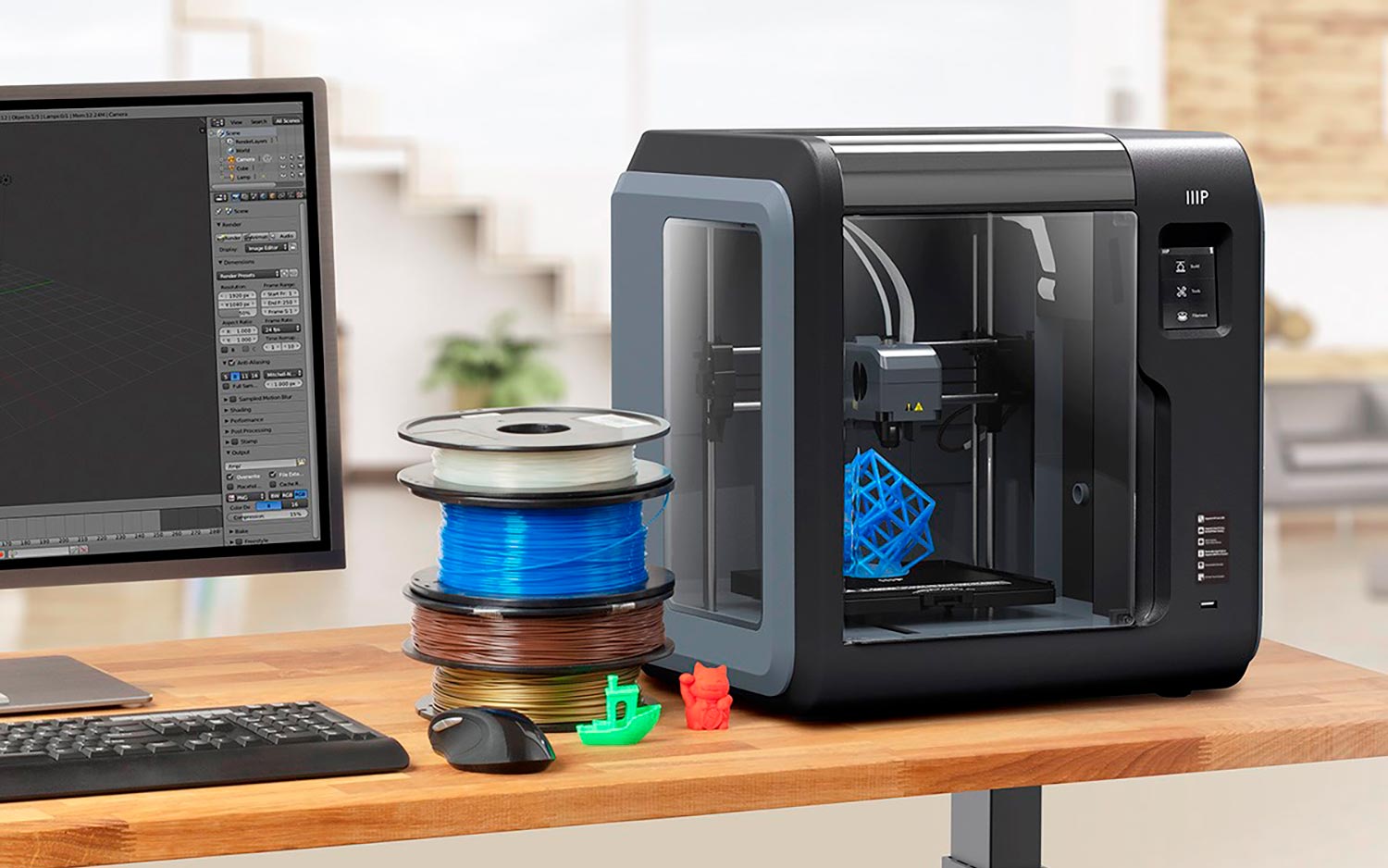Introduction
Welcome to this guide on how to connect a Monoprice MP Select Mini 3D Printer. If you’re new to 3D printing or just got your hands on this particular model, you might be wondering how to set it up and get it running smoothly. In this article, we will take you through the step-by-step process of unboxing, setting up, and connecting the printer to your computer.
The Monoprice MP Select Mini 3D Printer is a compact and affordable option for those looking to experiment with 3D printing at home. It offers a range of features and functionalities that make it ideal for beginners and enthusiasts alike. By following this guide, you’ll be able to get your printer up and running in no time.
Throughout the article, we’ll cover everything from unboxing the printer to troubleshooting common issues that you may encounter along the way. Whether you’ve purchased the printer for personal projects or for educational purposes, this guide will provide you with the necessary steps to connect and start printing with ease.
It’s worth noting that while the Monoprice MP Select Mini 3D Printer comes with its own set of instructions, this guide aims to provide you with a clear and concise walkthrough that complements the manufacturer’s manual. So, let’s dive in and get started on setting up your 3D printer!
Step 1: Unboxing and Setting Up the Printer
The first step in connecting your Monoprice MP Select Mini 3D Printer is to unbox and set it up. When you receive your printer, carefully unpack it and make sure you have all the necessary components. These typically include the printer itself, the power cord, the filament spool holder, the filament spool, and any other accompanying accessories.
Once you have everything ready, find a suitable location for your printer. It’s important to place it on a stable surface that’s easily accessible. Keep in mind that the printer will require some space around it for ventilation and movement during operation.
Next, remove any packaging materials and protective covers from the printer. Take a moment to inspect the printer for any visible damage or loose parts. If everything looks good, you can proceed to connect the power cord to the printer and plug it into a power outlet.
After connecting the power, turn on the printer by pressing the power button, usually located on the control panel or at the back of the printer. You should see the display light up, indicating that the printer has successfully powered on.
Now that your printer is set up and powered on, it’s time to move on to the next step and connect it to your computer so you can start using it.
Step 2: Connecting the Power and Turning On the Printer
Now that you have unboxed and set up your Monoprice MP Select Mini 3D Printer, it’s time to connect the power and turn on the printer. Properly connecting the power supply is essential for the printer to function correctly.
To connect the power, locate the power cord that came with your printer. It typically has a three-pronged plug that fits into a standard power outlet. Take one end of the power cord and insert it into the power input port on the back of the printer. Make sure the connection is secure.
Once the power cord is connected, plug the other end into a nearby power outlet. Ensure that the outlet is easily accessible and can provide a stable flow of electricity to the printer.
With the power connected, locate the power switch on the printer. It is usually located on the control panel or at the back of the printer near the power input port. Press the power button to turn on the printer.
After pressing the power button, the printer’s display should light up, indicating that it has successfully powered on. You may see the Monoprice logo or a welcome message displayed on the screen.
Wait for the printer to initialize and perform its startup sequence. This process may take a few moments. During this time, the printer will calibrate its systems and prepare for operation. Be patient and avoid interrupting the startup process.
Once the printer has finished initializing, you are ready to move on to the next step of connecting the printer to your computer. This will allow you to control the printer and send print jobs to it.
Overall, connecting the power and turning on your Monoprice MP Select Mini 3D Printer is a straightforward process. By ensuring a secure power connection and patiently waiting for the printer to initialize, you are setting the stage for successful printing.
Step 3: Connecting the Printer to your Computer
Once you have powered on your Monoprice MP Select Mini 3D Printer, the next step is to connect it to your computer. This will allow you to control the printer and send print commands from your computer.
To connect the printer to your computer, you will need a USB cable. Locate the USB port on the back or side of your printer. Take one end of the USB cable and insert it firmly into the USB port on the printer. Ensure that the connection is secure.
Next, find an available USB port on your computer. It is usually located on the side or back of your computer’s tower or along the sides of a laptop. Take the other end of the USB cable and insert it into the USB port on your computer. Again, make sure the connection is secure.
Once the printer is connected to your computer, the operating system should recognize it as a new device. It may prompt you to install the necessary drivers or software for the printer. Follow the on-screen instructions to complete the installation process.
If your printer came with a software disc or a driver installation file, you can use it to install the printer software. Alternatively, you can visit the Monoprice website and download the latest software and drivers specifically designed for your printer model.
After the installation is complete, open the 3D printer software on your computer. The software will provide you with a user interface where you can upload, configure, and print your 3D models. Familiarize yourself with the software’s features and settings to optimize your printing experience.
With the printer successfully connected to your computer and the software up and running, you are now ready to start creating and printing your own 3D designs. In the next step, we will discuss how to level the print bed to ensure high-quality prints.
Connecting your Monoprice MP Select Mini 3D Printer to your computer is a vital step in the setup process. It enables seamless communication between your computer and the printer, allowing you to unleash your creativity and bring your designs to life.
Step 4: Installing the Printer Software
After connecting your Monoprice MP Select Mini 3D Printer to your computer, the next step is to install the necessary software. The printer software is essential for controlling and managing your 3D printing workflow.
If your printer came with a software disc, insert it into your computer’s disc drive. The disc should contain the printer software and any additional tools or resources. Follow the on-screen instructions to begin the installation process. If your computer does not have a disc drive, you can visit the Monoprice website and download the software from their support page.
If you are downloading the software from the website, navigate to the support section and locate the software and drivers specifically designed for your printer model. Download the appropriate files and save them to a location on your computer where you can easily access them.
Once the software is downloaded or the disc is inserted, run the installation file by double-clicking on it. Follow the prompts and instructions provided by the installer. Review the terms and conditions, select the desired installation options, and choose the destination folder where you want to install the software.
During the installation process, the software may prompt you to connect your printer to the computer if you haven’t done so already. If this dialog appears, connect your printer using the USB cable as described in the previous step, and ensure the connection is secure.
Once the installation is complete, you can launch the printer software from your computer’s Start menu or desktop shortcut. Take some time to explore the software’s features, settings, and capabilities. Understand how to import and manipulate 3D models, adjust print settings, and monitor the printing process.
It’s also a good idea to check for software updates regularly. Manufacturers often release updates to address any bugs, add new features, or improve the overall performance of the printing software. Visit the Monoprice website or check for software update notifications within the software itself to ensure you have the latest version installed.
By properly installing the printer software, you are one step closer to unlocking the full potential of your Monoprice MP Select Mini 3D Printer. With the software installed and up to date, you can now move on to the next step of leveling the print bed to ensure accurate and successful prints.
Step 5: Leveling the Print Bed
Properly leveling the print bed of your Monoprice MP Select Mini 3D Printer is crucial for achieving successful prints. A level print bed ensures that the first layer of your 3D model is evenly printed and adheres properly to the build plate.
To begin the leveling process, make sure your printer is turned on and the printer software is running on your computer. The software will provide you with the necessary controls to adjust the print bed.
Start by selecting the “Level” or “Home” option in the software. This will move the print head to its home position, allowing you to access the print bed easily.
Next, locate the bed leveling adjustment screws or knobs. These are typically found underneath or on the sides of the print bed. They are used to raise or lower specific corners or sections of the bed.
Using the software or the controls on the printer itself, move the print head to one of the corners of the print bed. Place a sheet of paper, typically A4 or letter-sized, on top of the bed under the nozzle.
Adjust the leveling screws or knobs until the nozzle is just barely touching the paper. You should feel a slight resistance when you move the paper, but it should still be able to slide under the nozzle with minimal effort. Repeat this process for all four corners of the print bed.
Once you have gone through all the corners, it’s a good practice to repeat the process at least once more to double-check the leveling. This will ensure that the print bed is uniformly leveled.
While leveling the print bed, it’s important to make small and gradual adjustments. The goal is to achieve a consistent gap between the nozzle and the bed across the entire surface. Avoid making drastic changes, as this can lead to an imbalanced bed and affect your print quality.
After you have completed the leveling process, you can test it by starting a calibration print or a small test print. Observe the first layer closely and check if it adheres properly to the print bed. If adjustments are required, you can fine-tune the leveling as needed.
By properly leveling the print bed of your Monoprice MP Select Mini 3D Printer, you are ensuring that your prints have a solid foundation. This step is essential for achieving accurate and successful prints with clean and well-adhered layers.
Step 6: Loading Filament into the Printer
Now that you have leveled the print bed of your Monoprice MP Select Mini 3D Printer, it’s time to load filament into the printer. Filament is the material used for 3D printing and comes on a spool.
Begin by ensuring that your printer is turned on and the print bed is adequately leveled. Take note of the type of filament you will be using, as different filaments have different temperature requirements.
Locate the filament holder on the printer, usually located at the back or side. Place the filament spool on the holder, ensuring that it rotates freely and is positioned correctly.
Next, locate the filament feed port or filament guide tube on the printer. This is where the filament will enter the extruder and ultimately be melted and deposited during the printing process.
If your printer has a filament guide tube, insert one end of the filament into the tube. Make sure it goes all the way through and comes out on the other side. This helps to guide the filament smoothly into the extruder.
If your printer does not have a guide tube, simply insert one end of the filament directly into the filament feed port on the printer.
Now, in the printer control software or on the printer’s control panel, initiate the filament loading process. This will heat up the extruder to the appropriate temperature for the filament you are using.
While the extruder is heating up, gently push the free end of the filament into the filament feed port or the filament guide tube. Keep pushing until you feel resistance and the filament starts to feed into the extruder. Continue pushing until you see the filament come out of the nozzle.
Once the filament is properly fed into the extruder, you can trim any excess filament from the end. This will prevent any obstructions and ensure smooth printing.
Finally, run a test print or calibration print to ensure that the filament is flowing correctly and the extruder is properly heated. Monitor the printer to make sure that the filament is feeding consistently and the print quality is satisfactory.
By loading filament into your Monoprice MP Select Mini 3D Printer, you are now ready to unleash your creativity and start creating amazing 3D prints in a variety of colors and materials.
Step 7: Calibrating the Printer
After loading filament into your Monoprice MP Select Mini 3D Printer, the next step is to calibrate the printer. Calibration ensures that the printer is properly tuned and aligned, resulting in accurate and high-quality prints.
There are typically several aspects of calibration to consider, including the extruder temperature, print bed temperature, and print speed. Follow the manufacturer’s guidelines and recommendations for your specific printer model.
First, calibrate the extruder temperature. In your printer software or on the printer control panel, navigate to the temperature settings. Set the extruder temperature to the recommended value for the filament you are using. Allow the extruder to reach the desired temperature and stabilize before proceeding.
Next, calibrate the print bed temperature. Similar to the extruder, you can adjust the print bed temperature in the printer software or on the control panel. Set the temperature to the recommended value for the specific filament you are using. Again, wait for the print bed to reach the target temperature before moving on.
Once the temperatures have been calibrated, it’s time to focus on the print speed. In the printer software or control panel, locate the print speed settings. Adjust the speed to a value that suits the complexity and detail of your desired print. Higher speeds may result in faster prints, but can also compromise print quality, so it’s important to find the right balance.
Additionally, consider calibrating other settings such as layer height, infill density, and support structures, depending on your printing requirements. These settings can greatly impact the final print quality and structural integrity of your models.
Once you have made the necessary adjustments and calibrations, it’s a good practice to run test prints or calibration prints to assess the results. Observe the print quality, layer adhesion, and overall accuracy of the printed object. Make note of any issues or inconsistencies that you may encounter during this process.
If you notice any problems with the prints, take the time to troubleshoot and fine-tune the calibration settings. It may require further adjustments and experimentation to achieve the desired results.
Remember, calibration is an ongoing process, especially when using different filaments or working on complex designs. Regularly monitor and evaluate your prints, and make necessary adjustments to your calibration settings as needed.
By calibrating your Monoprice MP Select Mini 3D Printer, you are optimizing its performance and ensuring that each print is precise and of the highest quality.
Step 8: Testing and Troubleshooting
The final step in connecting your Monoprice MP Select Mini 3D Printer is to perform tests and troubleshoot any issues that may arise during the printing process. Testing and troubleshooting are essential for ensuring smooth and successful 3D printing experiences.
Once you have calibrated your printer and adjusted the necessary settings, it’s time to run test prints. Choose simple models or calibration files to evaluate the print quality and accuracy of your printer. Pay attention to details, layer adhesion, and overall print consistency.
During the test prints, monitor the printer closely to identify any potential issues. Look for signs of under-extrusion, over-extrusion, warping, or any other common problems that may affect the print quality. Take note of the specific issues you observe.
If you encounter any problems with the prints, it’s essential to troubleshoot and address the issues promptly. Start by checking the filament for any tangles or obstructions. Ensure that the filament is feeding smoothly into the printer and that there are no issues with the filament spool holder.
Inspect the print bed and make sure it is clean and free from debris. If necessary, clean it with isopropyl alcohol or a suitable cleaning solution to improve the adhesion of the printed object to the bed.
Continue troubleshooting by rechecking the leveling of the print bed. A poorly leveled bed can lead to print issues, so ensure that it is properly leveled and balanced.
Additionally, review your slicer software settings. Check the layer height, print speed, and temperature settings. Make sure they align with the requirements of the filament you’re using and the complexity of the print. Adjust the settings as needed to achieve optimal results.
If you’re still encountering difficulties, consult the manufacturer’s manual or the Monoprice support resources for troubleshooting guides specific to your printer model. Online communities and forums dedicated to 3D printing can also provide valuable insights and solutions to common issues.
Keep in mind that troubleshooting is a continuous process, and it may take some trial and error to resolve any issues you encounter. Patience and persistence are key in refining and optimizing your printer’s performance.
By testing your prints and troubleshooting any problems along the way, you will become more familiar with your Monoprice MP Select Mini 3D Printer and gain a deeper understanding of its capabilities.
Conclusion
Congratulations! You have successfully connected and set up your Monoprice MP Select Mini 3D Printer. By following the step-by-step instructions in this guide, you have learned how to unbox and set up the printer, connect it to your computer, install the necessary software, level the print bed, load filament, calibrate the printer, and perform testing and troubleshooting.
With your printer connected and calibrated, you now have the opportunity to explore the exciting world of 3D printing. Whether you’re creating prototypes, personal projects, or educational models, your Monoprice MP Select Mini 3D Printer can bring your designs to life.
Remember to continue refining your printing skills by experimenting with different filament types, adjusting print settings, and exploring more complex prints. The more you practice, the better you will become at achieving high-quality prints.
Lastly, stay engaged with the 3D printing community. Online forums, social media groups, and local maker spaces are valuable resources for getting inspiration, exchanging tips and tricks, and finding solutions to common printing challenges.
Enjoy the journey of exploration and creativity that 3D printing offers. Embrace the endless possibilities and push the boundaries of what you can create with your Monoprice MP Select Mini 3D Printer.
Now it’s time to unleash your imagination and bring your ideas to life through the fascinating world of 3D printing!







